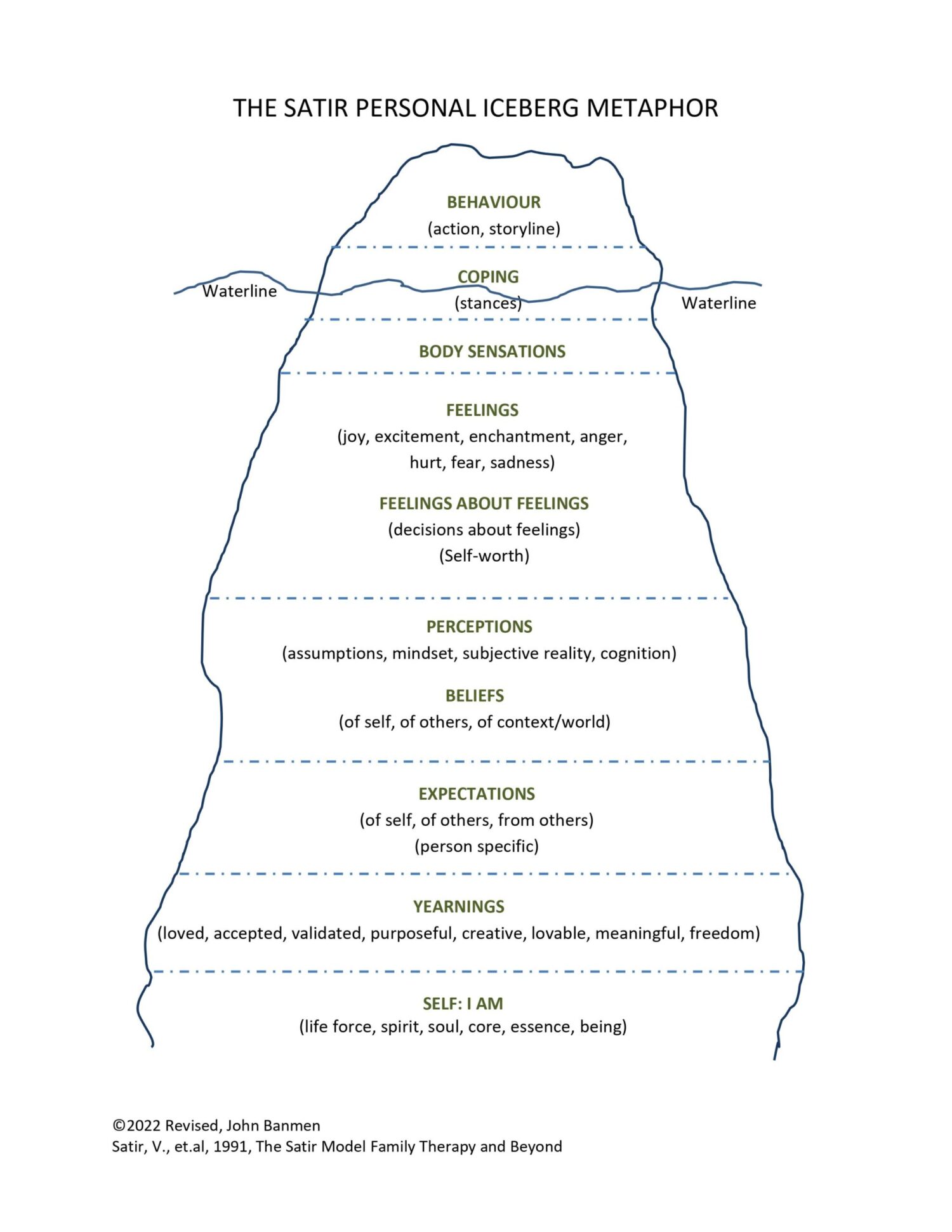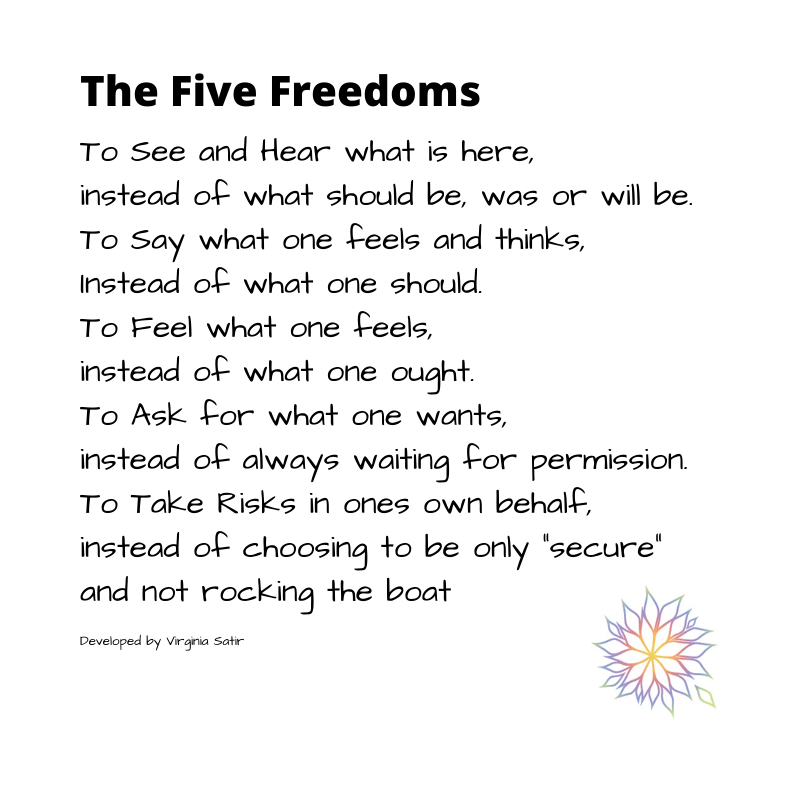
Dealing with Trauma using the Satir Model
In the Satir Model, trauma is addressed by focusing on the internal transformation of the individual, rather than just the external symptoms of trauma. Virginia Satir’s approach emphasizes the whole person, looking at the individual’s beliefs, feelings, and behavior in response to traumatic experiences. Here’s how trauma is dealt with using this model:
- Self-Awareness and Congruence:
The Satir Model encourages individuals to connect with their true selves. In the context of trauma, this means helping individuals recognize and acknowledge their pain, but without allowing that pain to define their identity. Through guided introspection, individuals learn to connect with their feelings, thoughts, expectations, and yearnings, rather than staying stuck in survival patterns like fight, flight, or freeze. This allows individuals to connect with their life energy and allows healing and wholeness to emerge.
- The Iceberg Metaphor:
Trauma is often held deep within a person’s psyche. The Satir Model uses the iceberg metaphor to illustrate this. At the tip of the iceberg are the behaviors and symptoms of trauma (like anxiety, withdrawal, or anger), but below the surface are body sensations, feelings (emotions), perceptions, core beliefs, expectations, and yearnings that drive those behaviors. The therapist helps the individual explore the deeper layers, uncovering these hidden aspects, which allows for healing from the inside out.
- New Perspectives on Familiar Patterns:
The Satir Model brings new possibilities and new perspectives, allowing the person to experience new awareness and new understanding of trauma in a safe environment. This is done through experiential process work and therapeutic dialogue. When the experience of the trauma changes, the person no longer sees themselves as a victim of the past, but as someone capable of creating new meanings and new choices in the present.
- Family Systems and Relationship Patterns:
Trauma impacts family systems and intimate relationships. The Satir Model uses early experiences to explore how family dynamics might have contributed to or reinforced the trauma. This helps individuals see how patterns from their family of origin have shaped their perceptions and reactions to trauma. By understanding these dynamics, individuals can begin to change their interactions and break free from negative family patterns.
- Focus on Resources and Strengths:
The Satir Model is strength-based, meaning it focuses on identifying and amplifying the individual’s inner resources and strengths. In trauma therapy, this involves helping individuals see their resilience and capacity for healing, empowering them to move beyond their traumatic experiences.
- Transformational Change:
The ultimate goal of trauma work in the Satir Model is transformational change, where the individual integrates the traumatic experience into their life story in a way that promotes growth and personal empowerment. The person learns new ways of relating to themselves and others, breaking free from the limiting beliefs and behaviors that the trauma may have created.
By focusing on deep, internal shifts and emphasizing congruence, the Satir Model helps individuals heal from trauma in a holistic and empowering way.
Edited by Tricia Antoniuk


